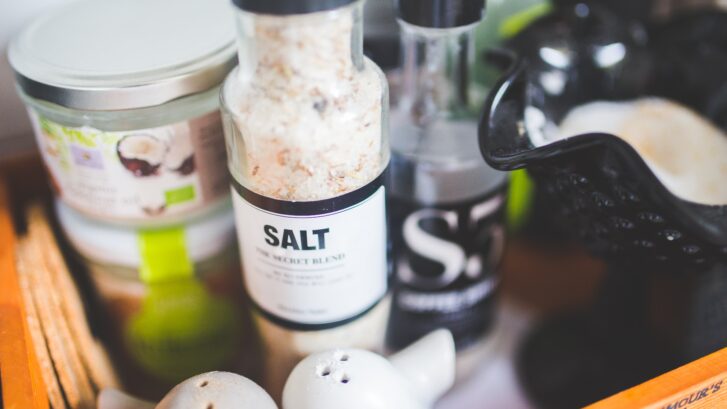Where All Your Salt Intake comes From
So many of our patients tell us they never add salt when cooking. So of course, they’re restricting their salt intake.
But if you eat anything processed, packaged, or prepared outside the home, your salt intake is much higher than considered healthy.
Our primary care doctors in Jupiter think you’ll be surprised by how much salt is in your kitchen outside the saltcellar. Manufacturers rely on it to prolong the shelf life of their products. It helps prevent the growth of bacteria and other disease-causing agents.
It’s also a flavor we’ve come to expect in our foods. Many of us crave the salty taste of such foods as potato chips and pretzels. Salt can also enhance the taste of sugar in products that are sweetened, such as breakfast cereal.
Sometimes added salt is necessary. Bread, for example, won’t rise properly without it, and cheese won’t hold together.
But there’s still no real need for the mountains of salt that are added to processed foods.
Health impacts
And a new study published in September in the New England Journal of Medicine (NEJM) proved once again that those who significantly reduced their sodium intake also lowered their risk of stroke, heart disease, and death from any cause.
The CDC points out only a small amount of dietary sodium is added during home cooking and at the table. Most of the sodium that Americans consume—about 70 percent—comes from restaurant, prepackaged, and processed foods. This includes many products that don’t even taste salty.
There’s no denying that we need a certain amount of salt to live. To maintain bodily functions, we require approximately 500 milligrams per day.
The current dietary guidelines recommend 2,300 milligrams of sodium per day. The American Heart Association (AHA) recommends even less (about 1,500 milligrams) for those at risk of heart disease. This includes adults ages 51 and older, Blacks, and those with high blood pressure, diabetes, or chronic kidney disease.
Most Americans, however, consume an average of 3,400 milligrams of sodium per day.
How does that happen?
It’s not that we’re going crazy with the saltshaker over everything we eat. Food manufacturers and restaurants are doing that for us.
Go into your kitchen and grab any package or can of food from a shelf. You may be amazed at the sodium levels contained in these products.
For instance, a one-cup serving of Campbell’s tomato soup contains 480 milligrams of sodium. That’s about 28 percent of the recommended 2,300 milligrams (noted as DV, or “daily value,” on the nutrition label).
Want to try a healthier choice? Try Campbell’s “Healthy Request” home-style chicken noodle, which still contains 410 milligrams or 18 percent of the DV.
Since few adults can get by on just a single cup of soup for lunch or dinner, the actual salt intake is likely to be higher. Or it may be a part of the famous soup-and-grilled cheese combo meal, which adds more sodium. Four slices of Kraft American cheese run you 1,000 milligrams of sodium, plus the bread, at 340 milligrams.
And this is not to pick on Campbell’s alone, because they all do it.
A single cup of Lipton’s noodle soup mixed from a packet is 650 milligrams. A cup of Progresso broccoli cheese with bacon is 850 milligrams.
By the time you’ve added any sides (a single dill pickle spear has about 300 milligrams of sodium, while four small club crackers have 125 milligrams) you’re talking some serious salt.
Then there’s restaurant food. Whether or not you can taste the sodium, it’s in there:
- KFC’s Original Recipe chicken breast contains 1,190 milligrams of sodium.
- A Burger King Whopper with cheese contains 1,339 milligrams of sodium.
- A Quiznos classic Italian sub contains 3,670 milligrams of sodium.
Lowering your exposure
Fortunately, you don’t have to fight the salt wars alone.
The Food and Drug Administration (FDA) last month announced the third stage in a years’-long government effort to encourage the food industry to reduce the levels of sodium in their products.
The voluntary guidelines direct food manufacturing companies and restaurants to reduce the sodium in their foods by 12 percent over the next 30 months. Studies have shown that our taste buds adapt fairly quickly to lower amounts of salt, so as these reductions are introduced gradually, we may not even notice.
In the meantime, there are many ways to reduce your salt intake.
- Cooking food yourself is the best way, and if you must add salt, do so at the table, not at the stove.
- Cooking with herbs and flavored vinegars will provide the taste you crave without adding salt.
- Try to avoid packaged, processed foods whenever possible, and look for those marked “low” or “no sodium.”
- Learn to read the nutrition labels on processed foods, paying special attention to the serving size per package.
- At restaurants, either request less salt in the dish when you place your order, or check the menu for the sodium content of the offerings.
And be sure to let both the FDA and some of your favorite food manufacturers know you want lower-sodium versions of their products.

